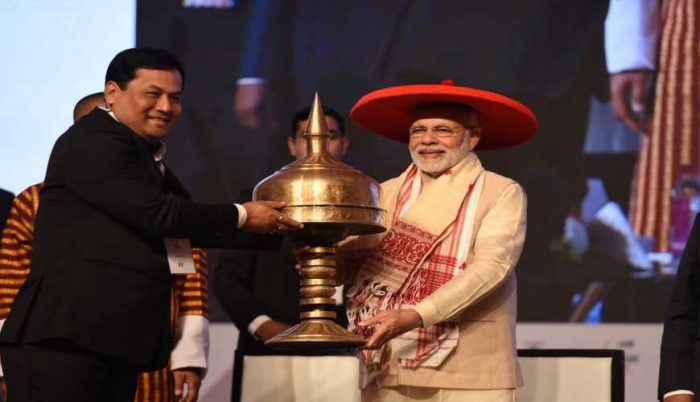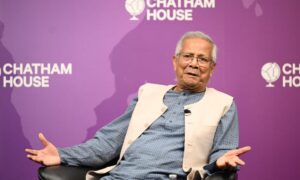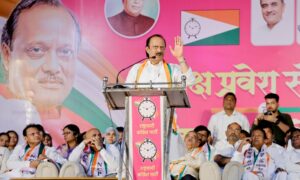
File Picture
Now that the dates for the 2019 Lok Sabha elections in Assam and North East states have been announced and filing of nomination papers by the candidates began it’s time to give a hard look at the development and political experience of the north east under the Modi government since 2014 ; and especially Assam ” the backbone state” of the region where the return of the AGP to the BJP led Sarbananda Sonowal government is widely seen as a case of realpolitik suggesting for the first time emergence of a multi lingual and cultural front united to pursue the” the development agenda” by relegating ” identity politics”- for the time being at least to a lower order.
This itself is a welcome development as “soft identity politics” has always been central to every party’s agenda in the north east not excluding even the Left. To a discerning observer this might even be perceived as a natural political expression of resistance to the unalterable reality of changes in the demography brought about in Assam and Tripura by a combination of forces released by the colonial capitalist mode of production and Partition. Introduction of the corporate driven Tea and Jute plantations, mining of coal and limestone, sand and exploration of oil, modern means of transportation and communication necessitated a colonial civil administration following inclusion of Assam into Bengal Presidency in 1826.
Together, these developments altered the economy of Assam totally so that ” by early 20th century, Assam was among the more prosperous and globalised parts of the world” as observed in the 2007 World Bank Strategy Report on Development and growth in North East . However, it changed the demography of Assam in a manner that only Malaysia had experienced in Asia around the same time after it was opened up for rubber plantations, mining and oil exploration by the British East India company and exactly for the same reason- a critical shortage of labour and skills.
This led to migration of the Chinese and the Indians to Malaya ; and just as Malaysia is still grappling with it’s ” Bhumiputra” (sons of the soil )policy of affirmative action for the natives- mainly Malay Muslims, in every north east state policies and systems are in place for protection of the rights of the “indigenous” communities and tribes and ” reservation of jobs under the government and seats in the legislature”. Protection of rights of the ” indigenous people” is central to the identity politics and political agenda of all parties in the region.
The above-mentioned world Bank report’s overview of the north east underscores a lesson drawn from global development experience in the post second world war that “geography is the economic destiny”; and hence the need to develop and expand trade and technical cooperation with Bangladesh and South East Asia. Every north east state would therefore agree to Restoration of pre Partition Railway Link to Chittagong Port of Bangladesh and demand early commissioning of the joint Indo Myanmar Kaladan Multi modal transport corridor designed to link Myanmar’ Sittwee Sea Port with the North East through Mizoram which is expected to be completed by 2020 as alternative to the Chittagong Port.
Despite this consensus there is also an apprehension that as ” geography shapes demography” ethnic identity of the” indigenous” people will be in jeopardy with expanding interaction with Bangladesh and to a lesser extent with Myanmar as it might facilitate illegal migration. This psyche maybe called the Bay of Bengal dilemma of Assam and the North East.
How the Modi government managed this complex environment and yet achieved great success in improving physical and social infrastructure in the region and implementing projects under the Act East initiative must be seen in this background. First, the proactive policy of the DONER Ministry under the leadership of Dr. Jitendra Singh resulted in vast improvement in utilisation of funds for development of infrastructure in the region.
This is clear from the fact that while in 2014- 15 DONER could spend only 73.7% of the budget estimates, in 2017-18 the utilisation was 93.7% of the budget of 2682. 45 cr. Second, it means that crucial projects such as Asian Development Bank funded NE Roads Projects or the NE Rural Livelihoods Mission projects are making good progress. In a recent press interview , Himanta Biswa Sarma, Assam’s energetic Finance Minister summed it up as a ” dramatic turn around” in infrastructure development in these words:
In the last five years every state in the north east has been connected by the Rajdhani express,metre gauge converted into broad gauge, single track railway lines are being converted into to double lines,bridges have come up over Brahmaputra and all the states are connected by airways, Bangladesh is opening up its ports for trade…”
One must however note that the global experience in such resource rich countries such as Nigeria in Africa suggests that infrastructure is not Development but only a base of the same which is realisable only when growth inducing institutions of governance and policies are put in place for ensuring maintenance of peace and order, speedy and fair settlement of contractual obligations, grant of credit and backed up by a strong science technology innovation and education system linked to the industry and economy to enable the economy to remain steadily on a high growth path. The precondition of building the growth momentum is internal peace and harmony. And,Identity politics – considered” racist” by western observers in the global context obstructs creation of such an “enabling environment”for development as it is founded on the fear of the ” other”.
Across the border of the north east great changes are taking place following IMF placement of Bangladesh as among the ” next eleven emerging market middle income economies” as steady 7% plus growth have raised its GDP to about US$ 250 billion with a growing export base of US$41bn and a per capita GDP of US$ 1517 which is about 70% higher than Assam’s per capita income. The GDP of West Bengal and Myanmar, the other two large economies in the north east neighborhood are now about$ 165 bn and US$70bn respectively and also growing at 7% plus. The implementation of the China- Myanmar Economic Corridor and especially the commissioning of the oil and gas pipelines from Kyaukpyu Sea Port on the Bay of Bengal coast to Ruili in yunan province of South China at an investment of $ 7.5 bn have given a big push to the Myanmarese economy.
These are signs of revival of the vibrant eastern regional economy of which north east India was an integral part that the political settlement of 1947 destroyed ; and the strategic object of the Act East policy is clearly to hasten its revival as embodied in the true spirit of BMSTEC- Bay of Bengal Multi sectoral technical and economic cooperation initiative. The north east has to overcome its Bay of Bengal dilemma to be a part of this exciting growth story.


















